Magnetic Anomaly
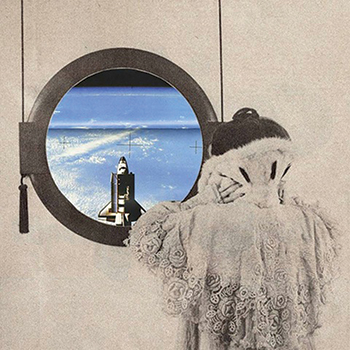
Cobra Family Picnic, “Magnetic Anomaly.” Cover art by Italian artist Mariano Peccinetti.
Cobra Family Picnic
Magnetic Anomaly
Sky Lantern/Cardinal Fuzz Records
Imagine a terrestrial cobra family picnic: some packrat samosas, perhaps a coconut mongoose curry and a birds egg lassi, laid out in a jungle glade somewhere, a tiger roaring in the background for atmosphere.
Then imagine an extraterrestrial cobra family picnic, as papa cobra, mama cobra and junior cobra sets the controls for deep space and enjoy some freeze-dried something or other before settling down for a millennium long deep sleep. Wa-la! Magnetic Anomaly by Cobra Family Picnic.
Cobra Family Picnic are firmly grounded here in the Tucson quadrant, but they clearly have their gaze set on distant cosmological horizons, and possibly other dimensions, as well. It’s spelled out right on the back cover of their new, full length Magnetic Anomaly release (following the Music For Lava Lamps EP in 2015), which has a song – broken into three parts – called, you bet, “Interplanetary Travel.” And the first track, “Draags,” starts out with a sample of a transmission from one of the Apollo moon missions, leaving any ambiguity about the direction the band is going behind. The four additional tracks on the LP, and five on the CD (“Elysium,” “Frost,” “Gilgamesh,” “Moody Mountain,” plus an epic, un-marked extra track) are all more-or-less cut out of the same hard crystal and titanium material of some of their musical predecessors on their own trips to the edge of the universe: the long and winding space jam.
 These ain’t your mama’s patchouli drenched, meandering Dead jams or Dave Matthew’s collegiate festival jams; these are more akin to the explosive, high volume jams that Can perfected back in the early 1970s, or some of Hawkwind’s more exploratory missions, and are definitely kissing cousin to Pink Floyd’s ultimate rocket-ship manifesto, “Astronomy Domine.” In other words, Cobra Family Picnic work on the dark and disorienting side of psychedelia, where achieving lift-off is more likely to involve a one way ticket to oblivion rather than incense and peppermints. Modern day psychedelia hasn’t been abbreviated to simply ‘psych’ for no reason, after all: if you sometimes feel like yr trapped in a rubber room in a psych ward at a show, well…say hi to Roky Erickson while you’re there.
These ain’t your mama’s patchouli drenched, meandering Dead jams or Dave Matthew’s collegiate festival jams; these are more akin to the explosive, high volume jams that Can perfected back in the early 1970s, or some of Hawkwind’s more exploratory missions, and are definitely kissing cousin to Pink Floyd’s ultimate rocket-ship manifesto, “Astronomy Domine.” In other words, Cobra Family Picnic work on the dark and disorienting side of psychedelia, where achieving lift-off is more likely to involve a one way ticket to oblivion rather than incense and peppermints. Modern day psychedelia hasn’t been abbreviated to simply ‘psych’ for no reason, after all: if you sometimes feel like yr trapped in a rubber room in a psych ward at a show, well…say hi to Roky Erickson while you’re there.
But perhaps it’s a disservice to called these tracks jams, a term that comes with some baggage; they may be jam-like in their winding-out, cyclical structure, but they are definitely songs. Most of the principal tracks here are built up from Boyd Peterson’s pulsating bass lines and Daniel Thomas’ hard hitting, steady drumming. Lesli Woods’ tripped-out keyboard work adds color, nuance and texture, while echo-drenched vocalist Randall Demsey does a great job of emoting into the void (especially on “Elysium,” which also features Richard Young on guitar), although his voice is a little to low in the mix to be dominant, and functions as much as another instrument as in the traditional front man role. Wood shines on the three-part “Interplanetary Travel,” where the band’s forward thrust is dialed back to idle, and they drift into hazy, ambient territory.
But enough beating around it: much of the ultimate prize and power of Magnetic Anomaly lies with Connor Gallaher’s dramatic display of electric guitar dimension-bending. Pick a song here – any song – and revel in the sweep and wide angle lens scope of his playing. It’s no news to anyone with their ear to the ground in Tucson that Gallaher is a uniquely talented and gifted string bender (including his work elsewhere on the pedal steel guitar), and this release is likely to clue some of the rest of the world in as well, certainly in psych-friendly Europe, where they will eat this up like crazy. On Magnetic Anomaly he has an apparently endless supply of new moves and shifting tonal approaches up his sleeve, seemingly tapping into the particulate flow of the universe itself. We in Tucson are lucky to count him as one of our own; at least for now.
Members of Cobra Family Picnic are all veterans of other Tucson bands, several with their feet in the modern psych movement, including Wight Lhite, Night Collectors, Desert Beats, Silver Cloud Express and Saint Maybe. Following the path of other local psych acts like The Myrrors, they have their sights set on Europe, which generally has a greater appreciation for our locally grown and nurtured talent than the rest of the U.S. does. Both their Cardinal Fuzz and Tucson-based Sky Lantern labels have high profiles in Euro psych circles, so success there almost seems like a given.
Magnetic Anomaly was produced by the band, and recorded at Jim Waters’ Waterworks Studios here in Tucson, with Waters doing the engineering. Just having Waters behind the board is a huge plus, and the record sounds dynamic and rich, with a pleasing depth in the mix, and so many sparks flying off Gallaher’s guitar it’s a wonder the studio didn’t catch on fire.
Who can blame us for craving a little off-planet escape in these strange times? Magnetic Anomaly can take you there, even if it’s for less than an hour and you remain essentially where you started; but, like the saying says, it’s the journey, more than the destination.


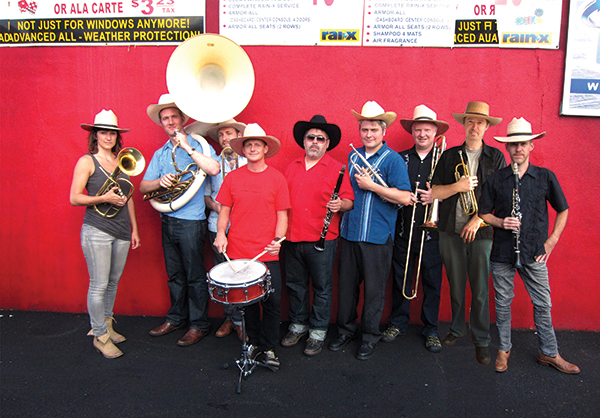
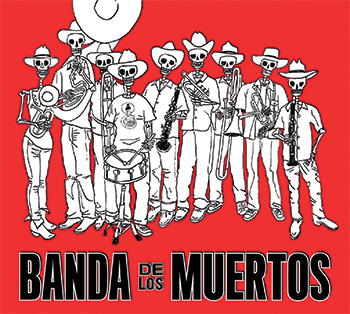
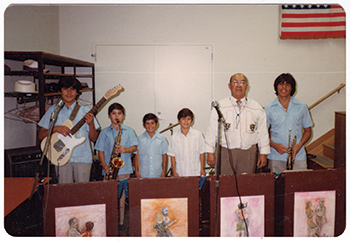
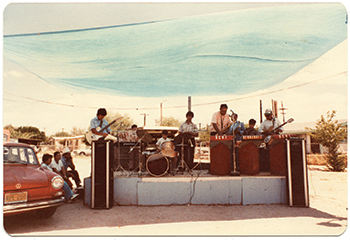
 Boom, Bust, Boom: A Story About Copper, the Metal that Runs the World, by Bill Carter
Boom, Bust, Boom: A Story About Copper, the Metal that Runs the World, by Bill Carter



Also find us on...